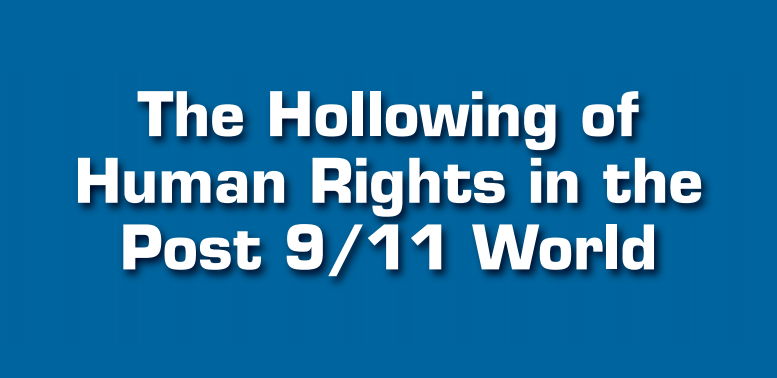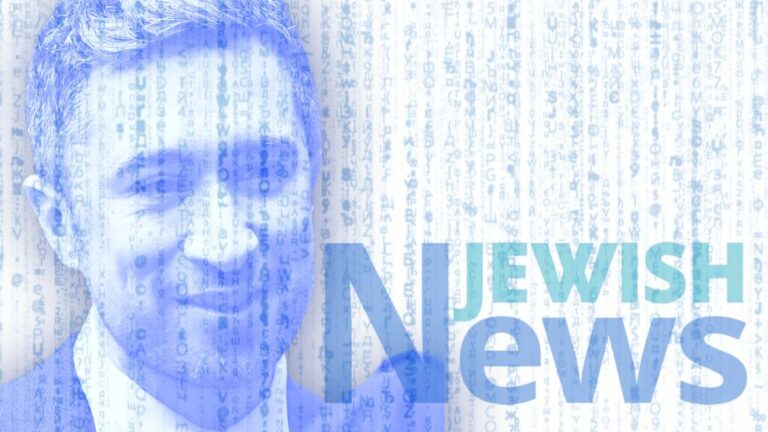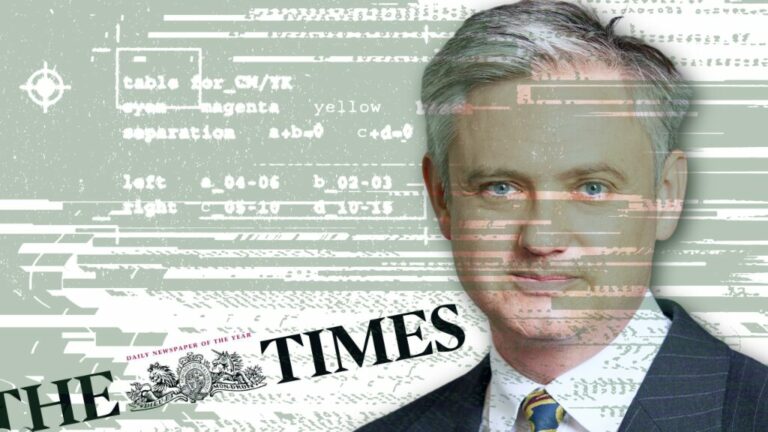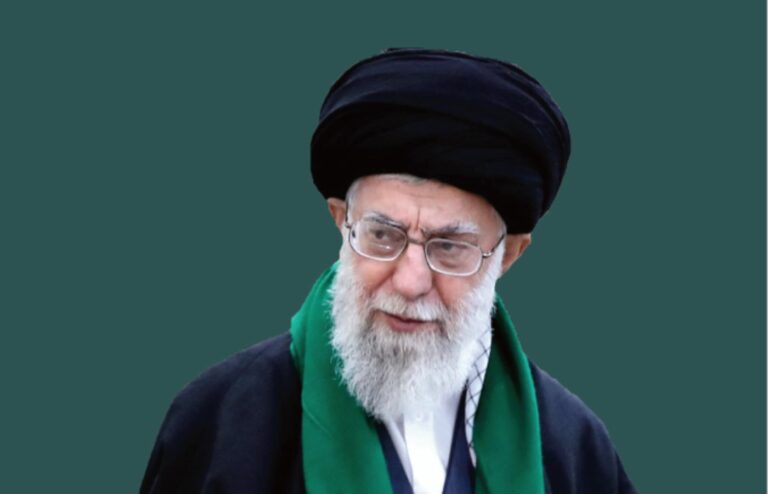Contents
- No definition of ‘terrorism’
- Blacklists
- The politics
- Human rights: an empty concept
Conclusion
The response of the United Nations (‘UN’) to international ‘terrorism’ following September 11 2001 has been seriously detrimental to the protection of human rights. This article examines four areas which demonstrate the inadequacy of the international response, led by the UN Security Council.
- No definition of ‘terrorism’
Immediately after September 11 2001, the UN Security Council passed Resolution 1373 under Chapter VII of the UN Charter, giving it binding force for UN members.[1] The Resolution obligated member states to take various steps to counter ‘terrorism’, for example, criminalising the funding of, and preventing support given to, groups considered ‘terrorist’. Importantly, the Resolution mandated the creation of a Counter-Terrorism Committee to monitor state implementation of the Resolution.[2] However, ‘terrorism’ itself remained undefined. As the ex-UN Special Rapporteur for Human Rights and Terrorism, Martin Scheinin, reported in 2005, this lack of a definition created the opportunity for misuse of the term in a way that was detrimental to human rights.[3] The UN General Assembly has been trying to reach a consensus on a definition but obstacles have included a failure amongst states to reach an agreement over whether all forms of subversive violence should be included within the definition.[4] The lack of an internationally agreed definition has led to abuses of human rights in the name of countering ‘terrorism’. Examples include:
- India – the Prevention of Terrorism Act 2002 (‘POTA’) allowed for detention of a terrorist suspect for up to 180 days without filing charges, secret interception and recording of conversations and use of police-obtained confessions as evidence in court.[5] This piece of legislation was used to target minorities and political opponents. In February 2003, the Gujarat state government charged 131 Muslims under POTA following a year of violence between Muslims and Hindus. However, no Hindus were charged under this piece of legislation.[6] Although POTA was repealed, its main features were still included in the amended 1967 Unlawful Activities Prevention Act.[7]
- Saudi Arabia – in 2014, Saudi Arabia introduced legislation making atheism and peaceful protest against the regime ‘terrorist’ offences.[8]
- UK – the Anti-Terrorism Crime and Security Act 2001 initially allowed detention of foreign nationals reasonably suspected of involvement in ‘terrorism’ for an indefinite period without charge or trial.[9] This was seen as a breach of the right to liberty by the UK judiciary[10] so the UK government enacted the Prevention of Terrorism Act 2005 which allowed the Home Secretary to impose an extensive, effectively unlimited set of conditions on the movements of persons suspected of involvement in ‘terrorism’. In 2011, the control orders regime was then replaced with the TPIMs regime under the Terrorist Prevention and Investigation Measures Act 2011, again allowing restraints to be placed on suspected individuals but this time requiring the permission of the court, except the court could make a decision without the suspected individual being present, notified, or being granted an opportunity to make representations. More recently, the UK government’s ‘PREVENT’ agenda under the Counter-Terrorism and Security Act 2015 seriously undermines freedom of expression and the right to privacy, whilst discriminating against Muslim populations.[11] ‘PREVENT’ is examined further in section 4 below.
The examples cited above all represent grave erosions of civil liberties and violations of human rights as codified in international instruments such as the Universal Declaration of Human Rights and the International Covenant on Civil and Political Rights (‘ICCPR’). The absence of a clear, concrete and internationally uniform definition of ‘terrorism’ has enabled such abuses to occur without meaningful challenge and consequence, because states have been able to justify their actions based on the notion of fighting a vague subject, ‘terrorism’. In summary , the absence of a definition of ‘terrorism’ and process by which an individual can be proven to satisfy this definition means that the Security Council mandate for states to counter ‘terrorism’ has enabled them to erode the civil liberties of their citizens in the name of fighting ‘terrorism’.
- Blacklists
Another significant UN initiative which has been damaging to human rights has been the use of blacklists. Resolution 1267 was passed by the Security Council in 1999 to create a sanctions regime against the Taliban, involving the freezing of financial assets and travel bans. [12] The Resolution mandated the creation of a Sanctions Committee, consisting of all members of the Security Council to oversee this. In 2000, a further UN Security Council Resolution was passed requesting the Sanctions Committee to “maintain an updated list… of the individuals and entities designated as being associated with Usama Bin Laden, including those in the Al-Qaida organization.”[13] In the first few weeks after September 11 2001, many more names were added to the list with no due process at all. There was no way of challenging a name that has been added or finding out the reasons why someone had been put on the list. [14]
The European Court of Justice (‘ECJ’) recognised the detrimental impact of the blacklists system on human rights in the Kadi case.[15] Mr Kadi had been placed on a blacklist as early as October 2001 at the instigation of the US Treasury Department, resulting in his economic assets being frozen.[16] The ECJ found that Mr Kadi’s right to an effective judicial remedy, right to a defence and right to property had all been breached as a result of being put on a blacklist without knowing why. Even when he was eventually given some information, the ECJ said it still was not adequate protection of his rights because he had no chance to challenge the assertions made against him in relation to his alleged connection to Osama Bin Laden.[17]
Similarly the European Court of Human Rights found in the case of Mr Nada that his right to a private and family life under Article 8 of the European Convention was breached by the Swiss measure implementing the Security Council Resolution placing him on a blacklist.[18] Clearly then, the use of blacklists, as part of the UN’s response to international terrorism, represents a serious breach of human rights.
Following the Kadi case, reforms were made to the blacklists framework. Resolution 1904 passed by the Security Council introduced the role of the Ombudsperson to help with delisting requests.[19] However, when this body was introduced in 2009, it was still the Sanctions Committee, comprising members of the Security Council, which had competence to delist individuals, as opposed to the Ombudsperson. In June 2011 there were further reforms so that the Ombudsperson could make a recommendation to the Sanctions Committee to delist an individual, which would then become effective if it was not rejected by consensus within 60 days. However, a Committee member could still make a referral to the Security Council for delisting, requiring 9 out of 15 votes to succeed, but, problematically, the Permanent Five each retained the power to veto.[20] The whole process still leaves little opportunity for an individual put on a blacklist to see in full the reasons why they have been put on the list. The recommendations of the Ombudsperson are not accessible and the Security Council still has the opportunity to have the final word, with no accountability.[21] Thus, despite procedural steps that give the impression of due process, the human rights of someone put on a list are severely impaired . Implementing the above-mentioned reforms as a response to human rights concerns only serves to entrench a system that, although marginally better, is still inherently abusive of human rights.
- The politics
The passive approach of the members of the UN in the face of US dominance of the ‘counter-terrorism’ agenda has also been detrimental to the protection of human rights. Rosemary Foot explains that the reason why Resolution 1373, passed after September 11 2001, does not mention human rights meaningfully in it is because it was framed largely by the US and promoted as an act of solidarity with the US, which may have deliberately designed the Resolution to reflect its preference for fighting the ‘war on terror’ unhindered by human rights concerns.[22] Yet, the fact that the Council of Europe was able to issue guidelines for fighting global terrorism in July 2002, within a year of September 11 2001, stressing the importance of adequately protecting human rights, suggests it was possible for states to take a position which challenged the US approach more than they actually did.[23] Of course, the European response to terrorism has also been problematic. However judicial institutions such as the ECJ and European Court of Human Rights have helped to some degree to hold governments to account. Some states did take issue with US methods later on. For example, 2004 reports of meetings of the Sanctions Committee show Germany, Spain and some Latin American countries expressing concern with the Committee’s approach whilst, on the other hand, the US stressed its disappointment at state failure to comply with the requirements under Resolution 1267.[24] Ultimately, politics and the power of the USA explain why there were no meaningful challenges within the UN. The inability of states to unite for the protection of rights within the UN, which is an objective set out in the UN Charter,[25] has allowed the ‘counter-terrorism’ narrative to be used for the abuse of human rights.
A key example of the USA’s political dominance enabling it to carry out serious violations of human rights without any accountability is Guantanamo Bay. The USA set up this detention facility to allow it to imprison terrorist suspects without any due process. In addition, torture techniques such as sleep deprivation, sensory deprivation, temperature extremes have all been employed there.[26] Since 2002, 779 men and boys, all Muslims, have been held at Guantanamo Bay. [27] By categorising the detainees as ‘unlawful combatants’,[28] the USA denied detained individuals protections under International Humanitarian Law, which are available for ‘prisoners of war’ under the Third Geneva Convention and ‘civilians’ under the Fourth Geneva Convention. For example, according to the Third Geneva Convention, in international armed conflicts, ‘prisoners of war’ must be treated humanely and must be repatriated without delay after the cessation of active hostilities.[29] In non-international armed conflicts (and in times of peace) International Humanitarian Law does not provide authorisation to detain individuals – anyone detained is entitled to protections under international human rights instruments such as the ICCPR (which the USA ratified in 1992), prohibiting arbitrary detention in Article 9 and prohibiting torture in Article 7.[30] Thus, irrespective of whether individuals were detained in international or non-international armed conflicts, in times of conflict or times of peace, it is evident that Guantanamo Bay represents a grave abuse of human rights and civil liberties.
There are other features of the USA’s ‘counter-terrorism’ agenda which are worth highlighting as they demonstrate how this country has been able to continue to breach human rights without any accountability. Section 1021 of the National Defence Authorisation Act, signed into US law by Obama on December 31 2011, codifies indefinite military detention of US citizens. The law allows anyone who “has committed a belligerent act or has directly supported such hostilities in aid of such enemy forces” to be indefinitely detained.[31] Whereas Guantanamo Bay may have been presented and defended by the US government as an exceptional measure, Obama’s legalisation of the same practice domestically – indefinite detention without trial – has led to the institutionalisation of this abuse of human rights in a way that normalises it, and therefore makes it far more difficult to challenge. Further features of the USA’s ‘counter-terrorism’ apparatus include the increased use of drone strikes under the Obama administration, a form of extra-judicial killing, violating the fundamental right to life, as well as warrantless surveillance of Americans, enabled under the FISA Amendments Act 2008 and reauthorized in 2012,[32] violating civil liberties, namely the right to privacy. The USA has been able to continue such abuses within a ‘counter-terrorism’ paradigm, without serious reproach because of its international political dominance.
- Human Rights: an empty concept
An alarming aspect of the UN’s response to ‘terrorism’ is that it has left the concept of human rights as simply a rhetorical device, hollowed and devoid of substantive meaning. As mentioned above, by introducing some reforms to the blacklisting system in response to human rights concerns around due process, the system has simply become more entrenched. Now, it can claim legitimacy and claim to be more human rights friendly, which is deceptive when the whole structure itself is antithetical to the principle of rights.
Human rights are now mentioned in UN Security Council Resolutions but simply seem to pay lip service to the concept. Resolution 1456 states that all measures taken to combat terrorism must be in accordance with human rights.[33] Resolution 1624, which condemns the incitement and glorification of terrorism, also states that terrorism poses a “serious and growing danger to the enjoyment of human rights”.[34] Even the 2006 UN Global Counter-Terrorism Strategy emphasises respect for human rights and the rule of law.[35] These references to human rights simply provide legitimacy for measures taken within a ‘counter-terrorism’ framework that ultimately undermine and violate human rights.
For example, Resolution 1624, which refers to the threat terrorism poses to human rights, itself represents a dangerous challenge to human rights, specifically freedom of thought and religion by linking terrorism to “extremism” and “intolerance”.[36] These terms remain undefined on the international level, leaving individual governments with complete discretion to decide what is ‘extreme’ and who is ‘intolerant’.
In the UK, we have seen the government define ‘extremism’, as part of its ‘PREVENT’ strategy, in a way that substantially widens the scope of the ‘counter-terrorism’ agenda. The government’s 2011 revised version of ‘PREVENT’, designed to target ‘non-violent extremism’, defines ‘extremism’ as “vocal or active opposition to fundamental British values, including democracy, the rule of law, individual liberty and mutual respect and tolerance of different faiths and beliefs. We also include in our definition of extremism calls for the death of members of our armed forces, whether in this country or overseas.”[37] Furthermore, the government’s definition of ‘Islamist extremism’ focuses on those who oppose Western intervention overseas: “Islamist extremists deem Western intervention in Muslim-majority countries as a ‘war on Islam’, creating a narrative of ‘them’ and ‘us’.”[38] Hence, without a common understanding and internationally-agreed definition of ‘extremism’, the UK government has defined this term in a way that firstly links it to ‘terrorism’, when there is actually little evidence to substantiate this relationship, and secondly, by emphasising opposition to Western foreign policy towards Muslim-majority countries as constitutive of ‘extremism’, the government has moved towards shutting down legitimate forms of expression against its policies within Muslim communities, itself a form of discrimination.
Additionally, the Counter-Terrorism and Security Act 2015 creates a statutory duty on schools, universities, NHS trusts and other public sector bodies to “prevent people from being drawn into terrorism”,[39] requiring them to make referrals to authorities for anyone suspected of being at risk of ‘radicalisation’. Similar initiatives which emphasise the role of public bodies such as social services and schools in ‘prevention’ exist in Sweden[40] and Denmark.[41] In essence, these initiatives operate as a network of government surveillance via public bodies.
Thus we have a fundamental contradiction whereby the language of human rights and civil liberties is being used at the international level, in UN Security Council Resolutions, as well as domestically, in government policies, to simultaneously justify serious abuses to human rights and civil liberties, namely the right to privacy, the right to freedom of expression, the right to freedom of religion and protection from discrimination. This is occurring due to the creation of a narrative that links ‘terrorism’ to ‘extremism’, ‘non-violent extremism’ and ‘radicalisation’. The result is that, certainly in government discourse, the concept of human rights is devoid of substantive meaning as it can so easily be misused to justify government actions that are themselves antithetical to the protection of human rights and civil liberties.
Conclusion
The international response to ‘terrorism’, examined in this article primarily through the UN’s actions following September 11 2001, has involved serious violations of human rights. Furthermore, and perhaps most worryingly, the framework regarding human rights has shifted, such that abuses to human rights are deemed acceptable in countering ‘terrorism’, a term which remains undefined on the international stage. As a result, the normative meaning of human rights has been seriously undermined. Ultimately, the response of the international community shows a lack of insight into what causes politically motivated violence. If the international community genuinely does have a desire to counter ‘terrorism’, then safeguarding the human rights of all humans, rather than abusing rights, is the more effective route.
[1] UN Security Council Resolution 1373. (28 September 2001). UN Doc S/RES/1373. Retrieved from http://www.un.org/en/sc/ctc/specialmeetings/2012/docs/United%20Nations%20Security%20Council%20Resolution%201373%20(2001).pdf.
[3] Martin Scheinin. Report of the Special Rapporteur on the promotion and protection of human rights and fundamental freedoms while countering terrorism. (28 December 2005). UN Doc E/CN.4/2006/98. [8-9]. Retrieved from https://documents-dds-ny.un.org/doc/UNDOC/GEN/G05/168/84/PDF/G0516884.pdf?OpenElement.
[4] UN General Assembly Press Release. (7 October 2005). UN Doc GA/L/3276. Retrieved from http://www.un.org/press/en/2005/gal3276.doc.htm.
[5] Marks, S. (2006). International Law and the ‘War on Terrorism’: Post 9/11 Responses by the United States and Asia Pacific Countries. Asia Pacific Law Review, 14, 1, 43, at 57.
[6] Human Rights Watch & United Nations. (2003). In the name of counter-terrorism: Human rights abuses worldwide. New York, NY: Human Rights Watch, at 16. Retrieved from https://www.hrw.org/legacy/un/chr59/counter-terrorism-bck.pdf.
[8] Saudi Arabia: New Terrorism Regulations Assault Rights. (20 March 2014). Human Rights Watch. Retrieved from:
https://www.hrw.org/news/2014/03/20/saudi-arabia-new-terrorism-regulations-assault-rights
[11] Open Society Justice Initiative. (2016). Eroding Trust, The UK’s Prevent Counter-Extremism Strategy in Health and Education. New York:Open Society Foundations, at 16-17.
[12] UN Security Council Resolution 1267. (15 October 1999). UN Doc S/RES/1267. Retrieved from https://documents-dds-ny.un.org/doc/UNDOC/GEN/N99/300/44/PDF/N9930044.pdf?OpenElement.
[13] UN Security Council Resolution 1333. (19 December 2000). UN Doc S/RES/1333. Para 8(c). Retrieved from https://documents-dds-ny.un.org/doc/UNDOC/GEN/N00/806/62/PDF/N0080662.pdf?OpenElement.
[15] Joined Cases C–402/05 P and C–415/05, P. Kadi and Al Barakaat International Foundation v. Council and Commission [2008] ECR I–6351.
[19] UN Security Council Resolution 1904. (17 December 2009). UN Doc S/RES/1904. Retrieved from http://www.un.org/ga/search/view_doc.asp?symbol=S/RES/1904%20%282009%29.
[20] UN Security Council Resolution 1989. (17 June 2011). UN Doc S/RES/1989. Retrieved from http://www.un.org/en/ga/search/view_doc.asp?symbol=S/RES/1989(2011).
[21] Kokott, J., & Sobotta, C. (2012). The Kadi Case – Constitutional Core Values and International Law – Finding the Balance? European Journal of International Law, 23(4), 1015-1024. [1021-1022].
[22] Foot, R. (2007). The United Nations, counter terrorism, and human rights: Institutional adaptation and embedded ideas. Human Rights Quarterly. 292. 489-514, at 499.
[23] Council of Europe. (2002). Guidelines on Human Rights and the Fight against Terrorism. Strasbourg. Retrieved from http://www.coe.int/t/dlapil/cahdi/Source/Docs2002/H_2002_4E.pdf.
[26] The Justice Campaign. (2016). Torture Techniques used in Guantanamo. (Website). Retrieved from: http://thejusticecampaign.org/?page_id=273#enhanced.
[27] Reprieve. (2016). Guantanamo Bay. (Website). Retrieved from: http://www.reprieve.org.uk/topic/guantanamo-bay/.
[28] US Presidential Memorandum. (7 February 2002). Para 2(d). Retrieved from: http://www.pegc.us/archive/White_House/bush_memo_20020207_ed.pdf.
[30] Hill-Cawthorne, L. (2016). Detention in non-international armed conflict. Oxford: Oxford University Press, at 69 and 144.
[31] National Defence Authorisation Act for Fiscal Year 2012. Retrieved from: https://www.treasury.gov/resource-center/sanctions/Programs/Documents/ndaa_publaw.pdf.
[32] See Goitein, E. (2016). The FBI’s Warrantless Surveillance Back Door Just Opened a Little Wider. Just Security. Retrieved from: https://www.justsecurity.org/30699/fbis-warrantless-surveillance-door-opened-wider/.
[33] UN Security Council Resolution 1456. (20 January 2003). UN Doc S/RES/1456. Para 6. Retrieved from https://documents-dds-ny.un.org/doc/UNDOC/GEN/N03/216/05/PDF/N0321605.pdf?OpenElement.
[34] UN Security Council Resolution 1624. (14 September 2005). UN Doc S/RES/1624. Preamble. Retrieved from https://documents-dds-ny.un.org/doc/UNDOC/GEN/N05/510/52/PDF/N0551052.pdf?OpenElement.
[35] UN Global Counter-Terrorism Strategy adopted as UN General Assembly Resolution 60/288. (20 September 2006). UN Doc A/RES/60/288. Retrieved from https://documents-dds-ny.un.org/doc/UNDOC/GEN/N05/504/88/PDF/N0550488.pdf?OpenElement.
[37] UK Government. (2011). Prevent Strategy, at 107. Retrieved from: https://www.gov.uk/government/uploads/system/uploads/attachment_data/file/97976/prevent-strategy-review.pdf.
[38] UK Government (2013). Tackling extremism in the UK. Report from the Prime Minister’s Task Force, at 2. Retrieved from: https://www.gov.uk/government/uploads/system/uploads/attachment_data/file/263181/ETF_FINAL.pdf.
[40] Government Communication 2014/15:146. (2015). Prevent, pre-empt and protect – the Swedish counter-terrorism strategy, at 14. Retrieved from: http://www.government.se/4a80d6/contentassets/b56cad17b4434118b16cf449dbdc973d/en_strategi-slutlig-eng.pdf.
[41] Danish Government. (2014). Prevention of radicalisation and extremism Action Plan, at 6. Retrieved from: http://www.justitsministeriet.dk/sites/default/files/media/Pressemeddelelser/pdf/2015/SJ20150422125507430%20%5BDOR1545530%5D.PDF.






